How to Remove Plagiarism from an AI Generated Article: Expert Tips
Ashley Merit
Content writer and editor for Netus.AI
Table of Contents
How to Remove Plagiarism from an AI Generated Article. Plagiarism is one of the most significant issues in the world of content creation, and it is not limited to human-generated articles. With the rise of AI-generated content, the problem has become even more severe. AI-generated articles are often seen as a quick and easy way to produce content, but they can also be a source of plagiarism. If you are looking to remove plagiarism from an AI-generated article, you have come to the right place.
The first step in removing plagiarism from an AI-generated article is to understand how the AI system works. AI systems are designed to generate content by analyzing existing content and using that information to create new content. This means that there is a high chance that the AI-generated article will contain plagiarized content. To remove plagiarism, you need to identify the plagiarized content and replace it with unique and original content.
Once you have identified the plagiarized content, the next step is to rewrite it. This can be done manually or through the use of software designed to remove plagiarism. However, it is important to note that simply replacing words or phrases with synonyms is not enough. The new content must be unique and original to avoid any further issues with plagiarism. By following these steps, you can effectively remove plagiarism from an AI-generated article and ensure that your content is original and unique.
Understanding Plagiarism in AI-Generated Content
Defining Plagiarism and Its Consequences
Plagiarism is the act of using someone else’s work or ideas without giving them proper credit. It is considered unethical and can have serious consequences, such as legal action, loss of credibility, and damage to reputation. In the case of AI-generated content, plagiarism can occur when the algorithm or model used to generate the content is trained on existing works without proper attribution or permission.
The consequences of plagiarism in AI-generated content can be severe. Search engines can penalize websites that use plagiarized content, resulting in lower rankings and reduced traffic. Additionally, readers may lose trust in the authenticity and credibility of the content and the website that published it.
The Role of AI in Content Creation
Chatgpt essay writer has revolutionized the way content is created, making it faster and more efficient. However, it also poses a risk of plagiarism, as the algorithms and models used to generate content can inadvertently reproduce existing works. To prevent this, it is important to ensure that the AI system is properly trained and that all sources used for training are properly attributed and cited.
One way to ensure authenticity and credibility of AI-generated content is to have a human editor review the content before publication. This can help catch any instances of plagiarism and ensure that the content is original and meets the desired standards.
In conclusion, understanding plagiarism in AI-generated content is crucial to maintaining authenticity and credibility. By defining plagiarism and its consequences and recognizing the role of AI in content creation, we can take steps to prevent plagiarism and produce high-quality content that meets ethical and professional standards.
Identifying Plagiarized Content
Plagiarism is a serious offense in the world of writing, and it can be particularly challenging to detect in AI-generated content. However, there are several methods that can be used to identify plagiarized content in an AI-generated article.
Using Detection Tools
One of the most effective ways to identify plagiarized content is to use plagiarism detection tools. These tools can scan the content and compare it to a vast database of existing articles to determine if there are any similarities. Some of the most popular plagiarism detection tools include Turnitin, Grammarly, and Copyscape.
AI Detection Software and Algorithms
AI detection software and algorithms are becoming increasingly popular in the world of plagiarism detection. These tools use machine learning algorithms to analyze the content and identify any similarities or instances of plagiarism. Some of the most advanced AI detection software and algorithms can even detect paraphrasing and other forms of plagiarism that may be difficult to identify otherwise.
It is important to note that while these tools can be highly effective in identifying plagiarized content, they are not foolproof. It is still important for writers to carefully review their content and ensure that it is original and free from plagiarism.
In conclusion, identifying plagiarized content in an AI-generated article can be challenging, but it is not impossible. By using detection tools and AI detection software and algorithms, writers can ensure that their content is original and free from plagiarism.
Effective Paraphrasing Techniques
Natural Language Processing for Rewriting
One of the most effective ways to remove plagiarism from an AI-generated article is to use natural language processing (NLP) techniques to rewrite the content. NLP is a subfield of artificial intelligence that focuses on the interaction between computers and human language. It can be used to analyze the original text and generate new, unique content that maintains the original intent and context.
NLP-based paraphrasing tools are widely available online and can be used to quickly and easily rewrite text. These tools use complex algorithms to analyze the sentence structure, identify the key concepts, and replace the original words with synonyms or similar phrases. However, it is important to note that these tools are not perfect and can sometimes produce awkward or incorrect sentences.
Maintaining Original Intent and Context
When paraphrasing an AI-generated article, it is important to maintain the original intent and context of the content. This means that the rewritten text should convey the same message as the original, but in a unique and original way. To achieve this, it is important to use synonyms and similar phrases that accurately reflect the meaning of the original text.
Another important consideration when paraphrasing is sentence structure. While it may be tempting to simply replace words with synonyms, this can sometimes result in awkward or incorrect sentences. To avoid this, it is important to carefully analyze the original sentence structure and ensure that the rewritten text flows smoothly and makes sense.
In summary, effective paraphrasing techniques involve using natural language processing tools to analyze the original text and generate new, unique content that maintains the original intent and context. It is important to use synonyms and similar phrases that accurately reflect the meaning of the original text, while also paying attention to sentence structure to ensure that the rewritten text flows smoothly and makes sense.
Ensuring Academic and Research Integrity
Citation and Proper Attribution
Citation and proper attribution are essential to maintaining academic and research integrity. When using AI-generated articles, it is important to ensure that all sources are properly cited and attributed. Failure to do so can result in accusations of plagiarism and damage to one’s academic and professional reputation.
One effective way to ensure proper citation and attribution is to use citation management software. These tools can help researchers keep track of sources, generate citations, and ensure that all sources are properly attributed. Some popular citation management tools include Zotero, Mendeley, and EndNote.
In addition to using citation management software, researchers should also be familiar with the citation standards used in their field. Different fields may have different citation styles, so it is important to be aware of the specific requirements for a given discipline.
Adhering to Academic Writing Standards
Adhering to academic writing standards is another important aspect of maintaining academic and research integrity. This includes following guidelines for formatting, style, and tone.
One important consideration when using AI-generated articles is to ensure that the writing style and tone are appropriate for academic or scholarly work. AI-generated articles may be more conversational or informal in tone, which may not be suitable for academic writing.
In addition to style and tone, researchers should also be familiar with the specific requirements for formatting and structure in their field. This may include guidelines for headings, subheadings, margins, and other formatting elements.
By following these guidelines for citation and academic writing standards, researchers can ensure that their work is of the highest quality and maintains the integrity of the academic and research community.
Tools and Resources for Plagiarism Removal
Selecting a Reliable Plagiarism Remover Tool
When it comes to removing plagiarism from an AI generated article, selecting a reliable plagiarism remover tool is crucial. There are several tools available in the market, but not all of them are trustworthy. It is important to choose a tool that is accurate, efficient, and user-friendly.
One such tool is ParaphraseTool.ai, which is a reliable and efficient online plagiarism remover. It has a user-friendly interface and provides accurate results. It also offers a free trial, which allows users to test the tool before making a purchase.
Another reliable option is Scribbr, which is a popular online plagiarism remover. It offers a user-friendly interface and provides accurate results. However, unlike ParaphraseTool.ai, it does not offer a free trial.
Free and User-Friendly Online Resources
There are several free and user-friendly online resources available for removing plagiarism from an AI generated article. These resources are ideal for those who are on a tight budget or do not want to invest in a paid tool.
One such resource is Grammarly, which is a popular online writing assistant. It offers a plagiarism checker that is easy to use and provides accurate results. It also offers a free version that is 100% free and does not require any sign-up.
Another free resource is DupliChecker, which is an online plagiarism checker that is easy to use and provides accurate results. It also offers a free version that is 100% free and does not require any sign-up.
In conclusion, selecting a reliable plagiarism remover tool or using free and user-friendly online resources can help remove plagiarism from an AI generated article. It is important to choose a tool or resource that is accurate, efficient, and user-friendly.
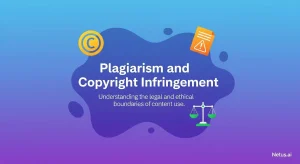
Plagiarism and copyright infringement | NetusAI
Plagiarism and copyright infringement Writers along with academic folks and students really need to steer clear of plagiarism and copyright infringement. They do this to
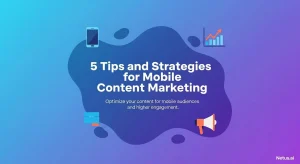
Tips and strategies for mobile content marketing | NetusAI
5 Tips and strategies for mobile content marketing Mobile content really matters a lot these days. Pretty much 98 percent of adults in the U.S.
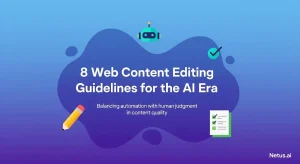
Web content editing guidelines for the AI era | NetusAI
8 Web content editing guidelines for the AI era Editing web content turns out to be pretty tough, especially when generative AI gets involved in
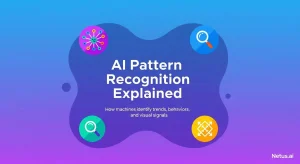
Explaining AI pattern recognition | NetusAI
AI pattern recognition explained Pattern recognition in AI really forms the backbone of what we see in artificial intelligence today. It allows machines to spot
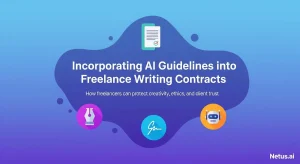
AI Guidelines in Freelance Writing Contracts | NetusAI
Incorporating AI guidelines into freelance writing contracts With AI content prevalent and ranking high on Google, freelance writing contracts must include AI guidelines. This is
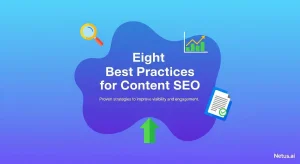
Best practices for content SEO | NetusAI
Eight best practices for content SEO Content has to show up and grab attention if it wants to do well. Content SEO takes care of

